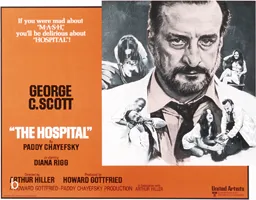Cinema is a great way to explain the past.
Martin Scorsese (2012)1
In cinema, every thematic component and motif can be subject to scholarly criticism. At the heart of the matter is whether the history of social science in medicine could include an exploration of medicine in cinema. I think it should. I assume few would dispute that, viewed in the right way, the story of medical professionals treating diseases in and out of the hospital and over decades, the manifestations of acute and chronic medical and neurologic disease, and how they affect the patient, family, and public health, can be told in a cinematic language. Moving between fact and fiction, screenwriters and directors are common proselytizers for social change, and pointing out disgrace or scandal may easily extend to medical institutions and their workers. You might think, therefore, that cinema can recreate disease and, in neurocinema specifically, make us understand how damaged brains work—or rather do not work. We can look at a frame of reference and examine how films incorporating the practice of medicine create meaning.
The preservation of early film and the recently achieved, widespread availability to view film over various social media platforms have allowed us to look at a number of themes—the changing persona and status of the physician and the shifting patterns of disease. Medical bioethics entered the fray in the mid-1970s, but neurologic disease-related themes as a provocation for controversial decision-making were preferentially used in film as early as the 1940s; later, they surfaced occasionally as part of a biopic but always to advance the cause of self-determination. Trying to understand another human being with a medical death sentence was (and still is) a topic of morbid curiosity for serious filmmakers. Other common dramatic themes included the perceived “atrocities” perpetrated in psychiatric institutions, the consequences of major addictions, medical violations, medical monsters and “freaks of nature,” and the all-too-common health disparities and lack of health equity. Historically, film may remind us that people can change (and societies with them).
No one enjoys going to the hospital, and we all fear bad news. In film, illness is often unexpected and accidental. Filmmakers often perceive medicine as health interrupted by illness followed by disability or death, and this topic is an endless source of ideas and fictional inventions. Screenwriters have inserted life-threatening disorders—for example, suddenly diagnosed terminal cancer—into the story to unnerve the audience and create tension in the narrative. Doctors in their white coats or surgical scrubs appear when the leading character in the film becomes ill. Over many years, their portrayal has evolved from the general family doctor to medical specialists, in parallel with the subspecialization of medicine itself. Currently, the medical specialties most preferred by screenwriters are surgeons, psychiatrists, and pediatricians.


